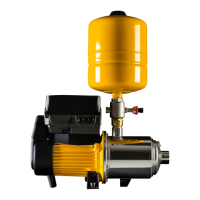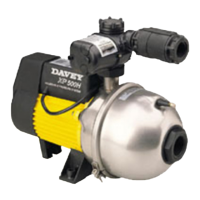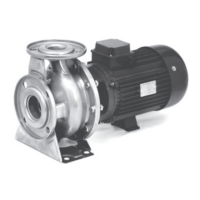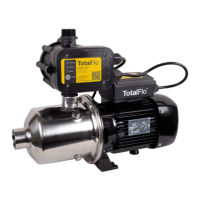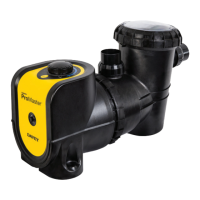23
7.4 Daisy-chain multiple DynaDrive systems
It is possible to run two DynaDrive pumps in parallel, with a shared discharge line. This can be particularly
useful in applications where the system’s maximum flow rate can be significantly higher than the system’s
minimum flow rate. For example: if DynaDrive needed a flow rate demand of up to 140L/min (37 gallons/min)
at a pressure of 400kPa. Running two DynaDrive DD90-11 systems in parallel with common discharge would
accommodate this. One DynaDrive would be designated as the MASTER, with the remaining DynaDrive
designated as a SLAVE. Each DynaDrive would require its own pressure transducer. When making changes
to settings in the system, only the MASTER can be adjusted.
On initial startup, the DynaDrive designated as the MASTER will be the first pump to start. The SLAVE
DynaDrive will come on if the first pump is unable to maintain set pressure, even when running at 100%
speed. The next time water is in demand, the SLAVE pump will come on first. This sequence is referred to
as auto-rotate. To wire up the MASTER and SLAVE pump, refer figure 7.10.
Figure 7.10
The connection between the DynaDrive controllers requires 2 x 0.25mm (24 AWG) cable. From one
DynaDrive, use the “COMUNIC” terminal 2. Wire to the “COMUNIC” terminal 2 of the second DynaDrive. To
complete the circuit, from one DynaDrive, use the “COMUNIC” terminal 3. Wire to the “COMUNIC” terminal
3 of the second DynaDrive. Davey suggests limiting the distance between the pumps to 2m (6½ feet). To set
up multiple DynaDrive to run in a common manifolded system use the following:
To set the DynaDrive to recognise the daisy chain configuration:
• Ensure automated control is turned off. To turn the automated control off, push the
Automatic on /
manual off button.
• The green
Automatic LED will turn off, see figure 7.8;
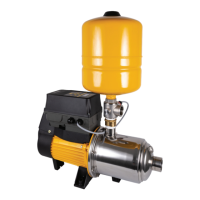
